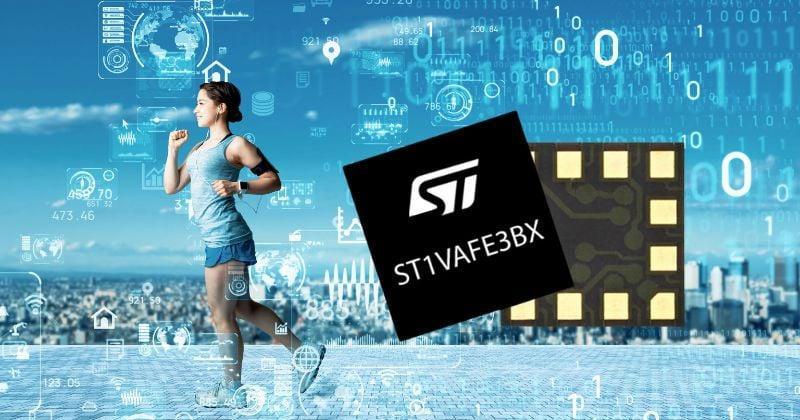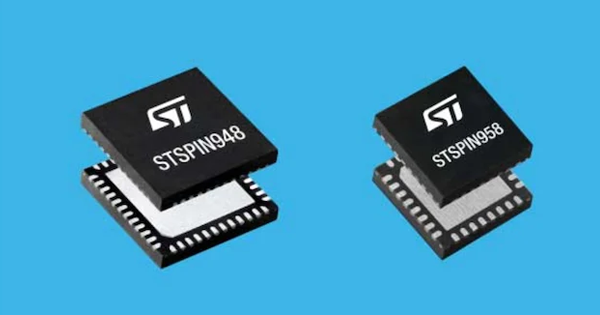
Intel Ushers in the Age of AI PCs With New Core Ultra Processors
In June of this year, Intel started to tease its upcoming Lunar Lake architecture, which it claimed would enhance AI performance by 3x compared to previous generations. Now, nearly three months later, Intel has officially launched its Intel Core Ultra 200-V series processors, introducing a range of architectural improvements, enhanced graphics, and optimized power management. According to Intel, these features establish it as a compelling choice for AI-driven personal computing devices.
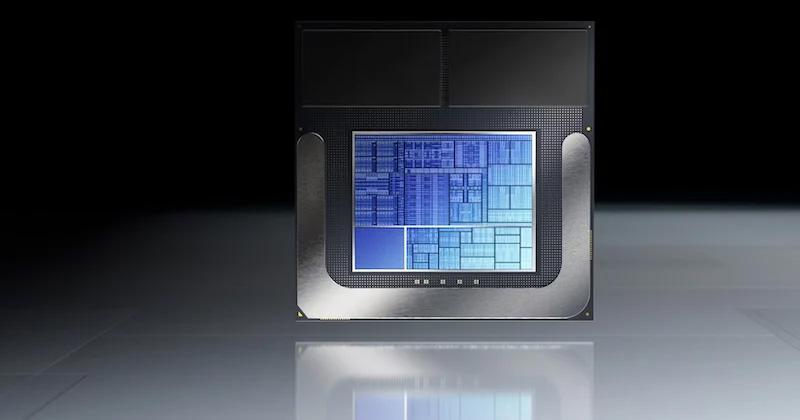
Intel Core Ultra 200-V series processors
High-Level Architectural Advancements
At the heart of Intel's new processors is a rearchitected x86 platform designed to prioritize power efficiency while delivering high-performance computing. To this end, the Core Ultra series combines Performance Cores (P-cores) and low-power Efficient Cores (E-cores), balancing workload performance and energy consumption. The P-cores are optimized for performance per watt per area (PPA) for power-hungry tasks such as content creation and gaming efficiency.
The Core Ultra series integrates four P-cores and four E-cores, allowing systems to dynamically allocate power where it's needed most. The P-cores can turbo boost up to 5.1 GHz, while the E-cores can reach up to 3.7 GHz and are supported by up to 12 MB of shared L3 cache. Intel's Core Ultra processors also leverage a fourth-generation neural processing unit (NPU), which offloads AI tasks from the CPU and delivers up to 4x the AI throughput of previous generations. The NPU features double the bandwidth of previous generations and can reach 48 TOPS by itself.
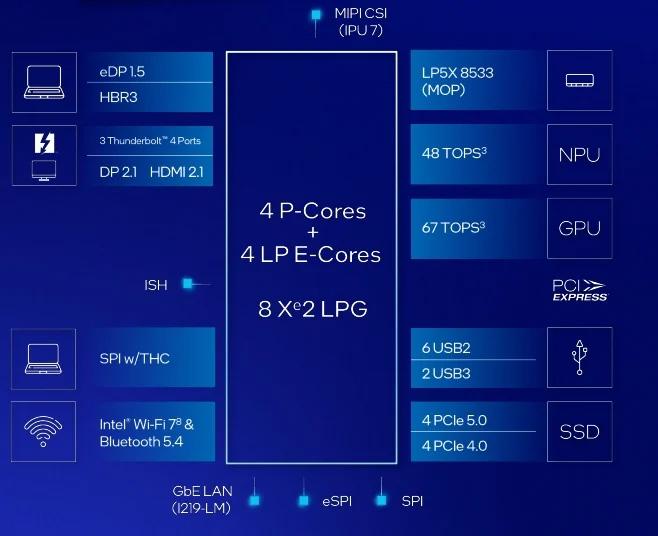
High-level block diagram of the Intel Core Ultra 200-V series processors
Despite this improved performance, the devices maintain low power consumption via Intel’s latest power-saving technologies, such as Dynamic Tuning, which uses machine learning algorithms to optimize performance and battery life. Other dynamic power management features, such as Intel Speedshift and Adaptive Boost, help fine-tune power allocation. Overall, the processors are said to offer up to 20 hours of battery life in real-world productivity scenarios.
AI and Graphics Capabilities
The Intel Core Ultra processors offer AI-driven performance up to 120 TOPS across the CPU, GPU, and NPU. The processors include over 300 AI-accelerated features developed in collaboration with more than 100 independent software vendors.
Additionally, Intel's Core Ultra processors provide AI-based security features, such as local deepfake detection, to ensure content integrity and protect sensitive data. The processors' NPU offloads AI workloads from the CPU and GPU, thereby preserving battery life while maintaining system performance.
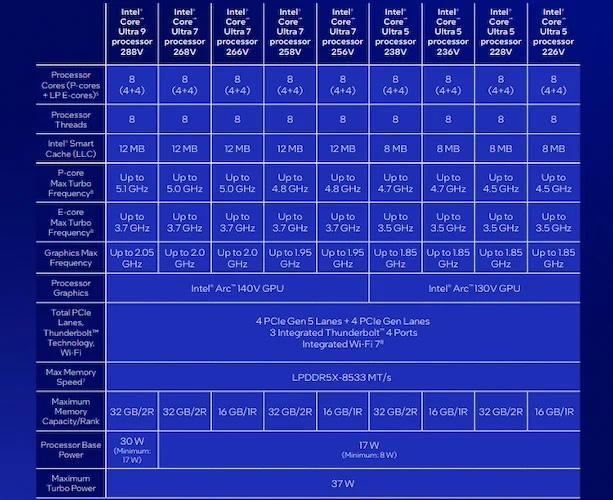
Intel Core Ultra 200-V series processors SKU chart
Intel also boosted graphics performance in the Core Ultra series, integrating its second-generation Xe graphics architecture. The processors include the Intel Arc GPU, which supports DirectX 12 Ultimate and AI-powered graphics rendering technologies like Intel XeSS. The Intel Arc GPUs come with eight Xe cores, 64 vector engines, and 8 MB of cache, resulting in a 30% leap in gaming performance compared to previous generations. These GPUs can deliver up to 67 TOPS for AI-based image enhancement and real-time ray tracing.
Support for Personal AI Compute
By combining cutting-edge technology with extensive industry collaboration, Intel hopes the platform will meet the needs of creators, gamers, and professionals in an AI-driven future. The Core Ultra mobile processors are available in over 80 consumer designs from leading manufacturers, including Acer, ASUS, Dell, HP, Lenovo, and Samsung. Pre-orders start immediately, and systems hit shelves on September 24, 2024.



